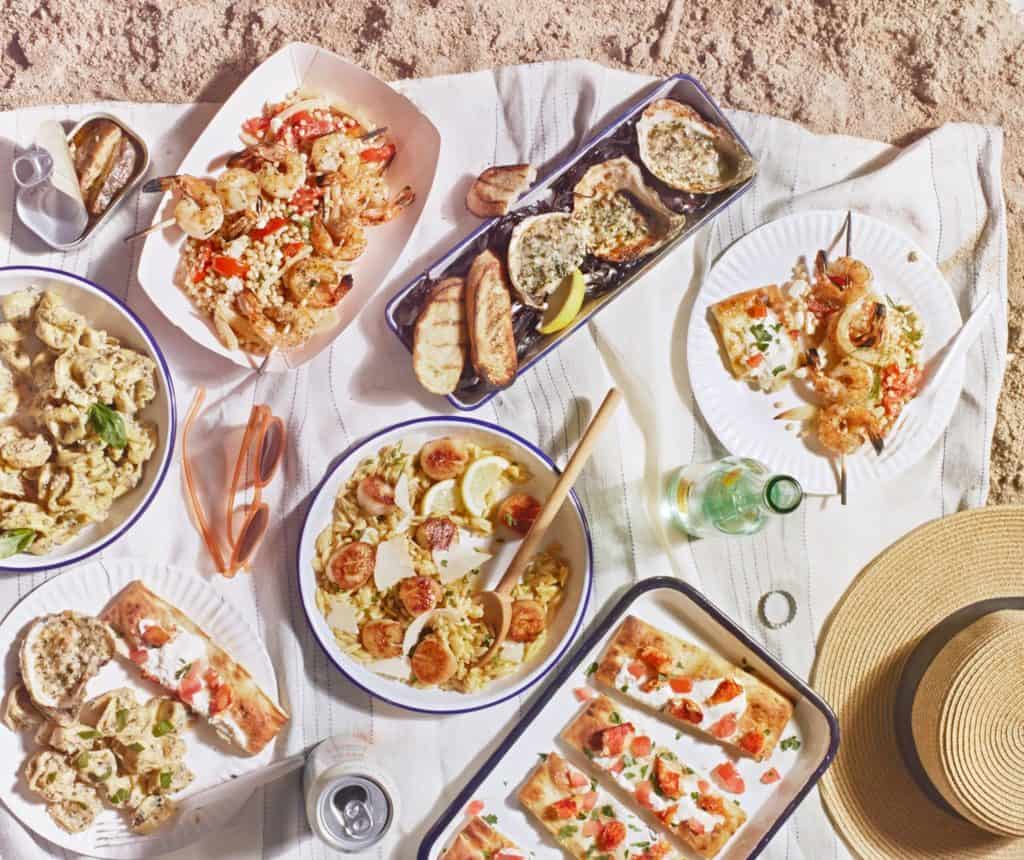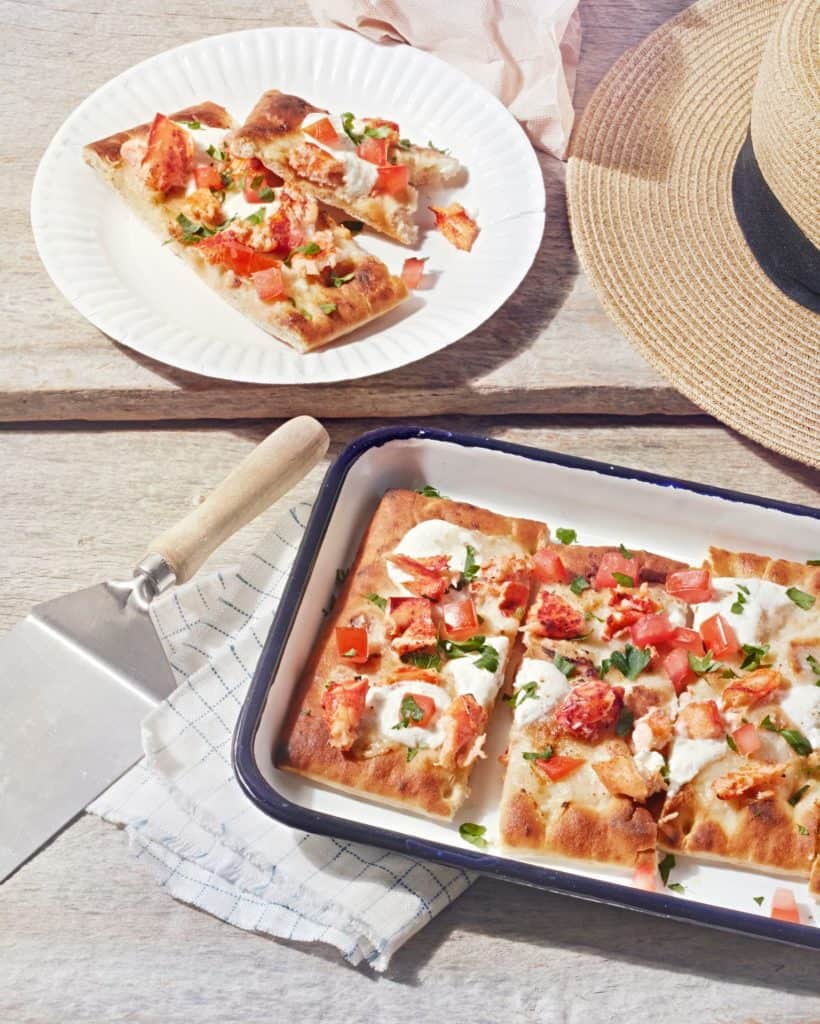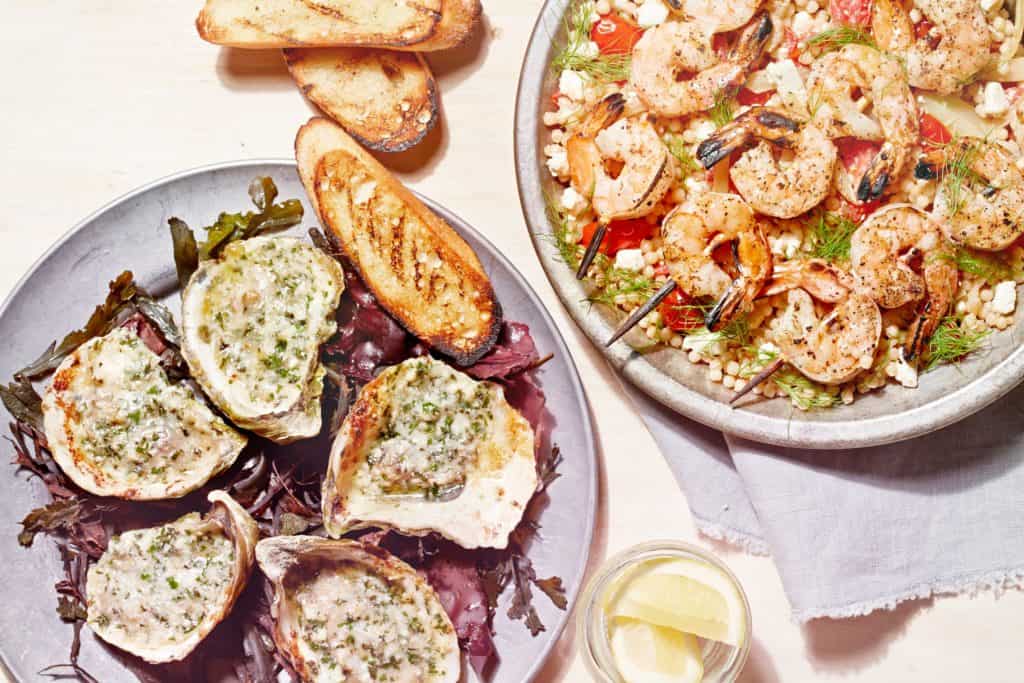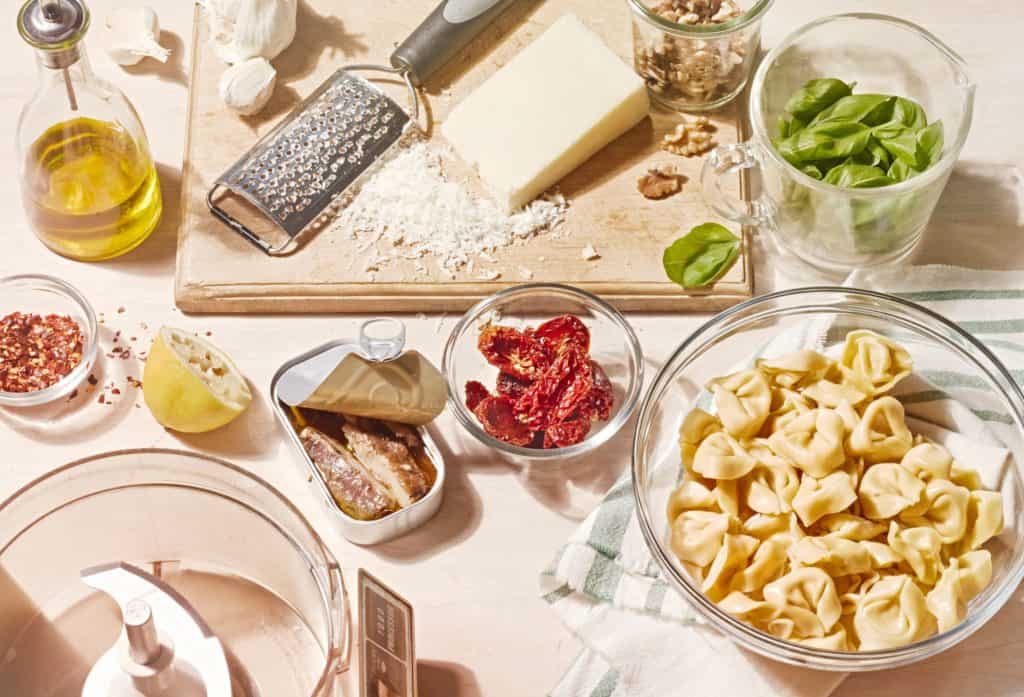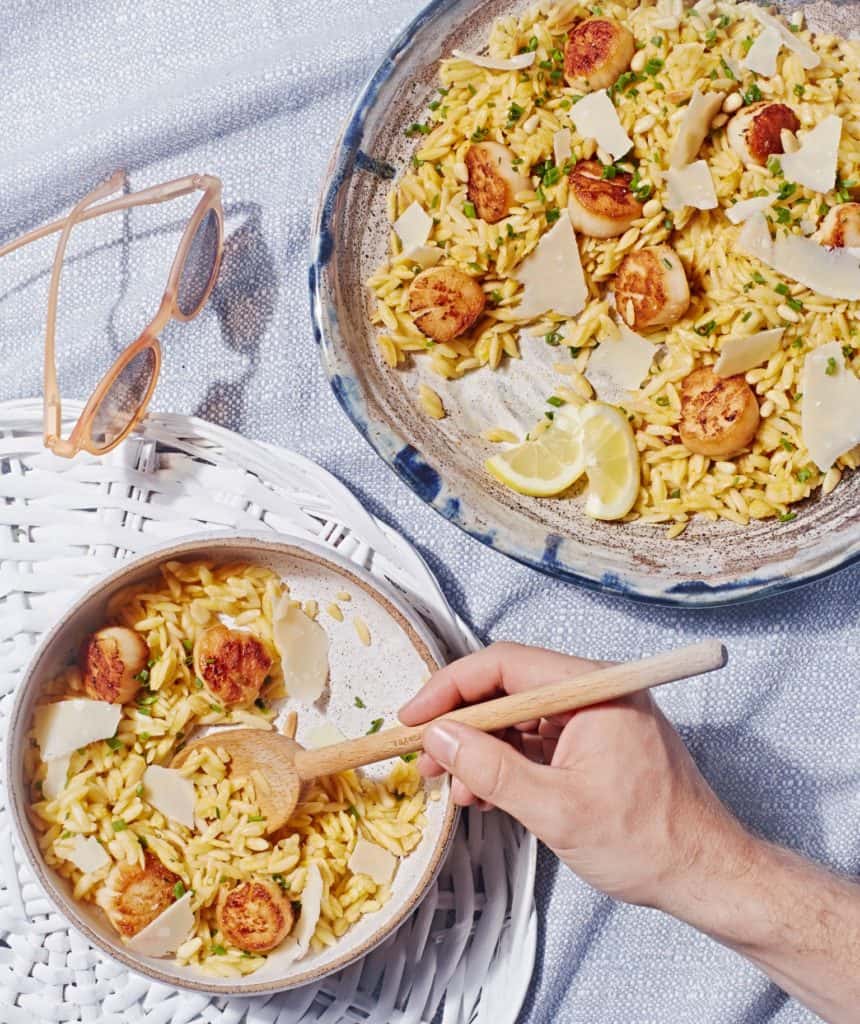Photographed by Nina Gallant, Styled by Elle Simone Scott and Nina Gallant
Across the globe, seafood is undoubtedly the star of warm weather feasts. Every gulf, seashore, and coastal region offers up something special to summer tables. However, we’d argue that cheese is an unsung hero of warm weather dining, especially when paired with the catch of the day. Sure, summer entertaining can mean charcuterie and antipasto spreads, which allow diners to dip their toes into the world of cheese. But why should the curds end with the appetizer course?
On the following pages, we’ve outlined some best practices when sourcing seafood that’ll give you a confidence boost—and, who knows, maybe a sprinkling of parmesan and Pecorino Romano will finally convince you to give oysters a try. Find out from an expert fisherwoman why sustainable fishing is so important, and stick around for five cheesy seafood recipes for next-level nautical noshing.
The Freshest Catch
When it comes to seafood, we’re all about the three Ws: who caught it, where it came from, and when it was caught. Below is a general guide for some of seafood’s finest, and when in doubt, you can always ask the fishmonger at your local grocery store. They’ll be able to answer questions and steer you in the right direction if your queries go beyond our tips and tricks for sourcing.
LOBSTER: Meatiest and most affordable April through June as lobster fishing picks up for the season. November through July is roughly the best time of year to purchase quality hard shell lobsters, which is what you’ll want to look for if you’re in the market for toothsome texture. Once you buy, cook immediately! Lobster that isn’t cooked within the first hour out of the water runs the risk of becoming tough and chewy. If it goes uncooked for over 4 hours, the meat will turn mushy and mealy.
+ Look for: Lobster caught in Maine, New Hampshire, Massachusetts, or Canada.
SCALLOPS: When it comes to this mollusk, you’ve got your choice of bay scallops or sea scallops. Bay scallops are relatively small with a peak harvest season in the fall, while sea scallops can be up to three times larger and are harvested year round. In terms of taste, bays tend to be more tender and sweet, while sea scallops are more firm and can stand up to more intense flavor pairings. The smaller bay scallops are harvested in bays and estuaries by net, rake, and dredge. Bay scallops are typically sold pre-shucked; you can get around 100 scallops in a pound. Avoid imported, farm-raised scallops; scallops should smell like the sea, not fishy or pungent.
+ Look for: Fresh sea scallops from one of the top US scalloping ports: New Bedford, Massachusetts; Cape May, New Jersey; and Norfolk, Virginia.
+ Look for: Fresh bay scallops from anywhere on the East Coast in the US and Canada.
ANCHOVIES: What these little fish lack in size, they make up for in variety, and curing is the name of the game. Tinned, salt-packed anchovies are gutted and dried before they’re packed in salt, which draws out any excess water and concentrates the flavor of the fish. These work great as toppings thanks to all that salt, but they also tend to be a bit on the pricey side. Canned, oil-cured anchovies are typically cheaper and they’re good for when you want to add an umami oomph to dressings or sauces.
+ Look for: Anchovies in water, like the ones from Wild Planet for a cleaner, milder flavor than their salt and oil compatriots. Bonus: Wild Planet offers sustainably caught options with all their products, including their Atlantic Ocean–caught ’chovies.
SHRIMP: Knowing how to choose the best shrimp goes beyond grabbing a bag from your grocery freezer section—size, source, and recipe application should be your guides. Shrimp can range from extra-large, about 10 shrimp per pound, to tiny, about 70 or more per pound (most recipes will specify required shrimp size). Knowing where your shrimp is sourced is key. Wild shrimp can be either cold water or warm water varieties harvested from coastal ocean waters with traditional vessels. Farmed shrimp are warm water varieties that are spawned in open and closed pond systems supplemented with formulated feeds.
+ Look for: “Domestic” shrimp, a term used to refer to wild shrimp harvested from the coasts of the United States; “imported” refers mainly to farm-raised shrimp from regions in China, Thailand, the Gulf of Mexico, and the Pacific coasts of Central and South America.
OYSTERS: Oysters taste totally different depending on where they’re sourced. Oysters grow coastal in large blooms made up of millions at a time. Because oysters are typically enjoyed raw, you’ll need to take extra care when preparing them at home. First, make sure the meat of the oyster is cream to beige in color and is surrounded by clear liquid (natural moisture associated with the shucked oyster). It should smell fresh and mild. Live oysters in the shell should not gape and should close when tapped. If the shell doesn’t close tightly or the meat is dry when the shell is open, don’t eat it. Avoid eating oysters with broken or damaged shells.
+ Look for: US oysters—specifically those from Maine, Alabama, Washington, and California—definitely give the imports a run for their money.
—Seafood 101—
Fresh lobster should have long, undamaged antennae. When removed from the tank, you’re looking for liveliness in the form of claw movement and tail curling. Avoid sluggish, languid lobsters that are near death, also known as “sleepers.”
Lobster Ricotta Flatbread Pizza
Nutritional Information
ANCHOVIES: These oily little fish are naturally rich in omega-3 fatty acids, plus they’ve been known to lower cholesterol and triglyceride levels.
LOBSTER: A rich source of copper and selenium, lobster also contains zinc, phosphorus, vitamin B12, magnesium, vitamin E, and a small amount of omega-3 fatty acids.
SCALLOPS: These mighty mollusks are highly nutritious, containing vitamin B12, phosphorus, selenium, choline, zinc, and more.
SHRIMP: Low in fat and high in protein, shrimp is also a moderate source of omega-3 fatty acids.
OYSTERS: This low fat, high protein seafood choice also contains above-average levels of healthful vitamins and minerals such as selenium, zinc, iron, magnesium, and vitamin B.
—Seafood 101—
When buying fresh whole oysters, it’s important to make sure they’re alive. (Dead oysters harbor harmful bacteria.) The shells of live oysters should be tightly closed or should try to close when tapped or agitated.
Shrimp is the most popular seafood eaten in the United States, accounting for over 25 percent of the nation’s annual per capita seafood consumption. Based on this calculation, the average consumer eats 4 pounds of shrimp per year.
New Orleans-Style Charbroiled Oysters & Grilled Shrimp Skewers with Tomatoes, Fennel, Pearl Couscous, and Feta
—Ask a Fisherwoman—
“The best way to know you are getting sustainable seafood is to do the research. Know where your fish is coming from and buy wild. [Buy] what’s in season and [readily] available—US-caught, preferably local or at least a short supply chain allows for better transparency of who caught, how, and from where, and a [smaller] carbon footprint. US fishermen are required by law to adhere to the strictest rules and regulations, making US-caught fish the most sustainable in the world.”
—COREY WHEELER FORREST, third-generation Rhode Island commercial “fishermom”
Best Cheeses to Pair
Consider this a beginner’s guide to matching curds with crustaceans and other seafood. Feeling adventurous? Mix it up! There’s no wrong way to enjoy.
Cheese Tortellini Salad with Anchovy Pesto and Sun-Dried Tomatoes
Pan-Seared Sea Scallops with Herbed Orzo and Parmesan


